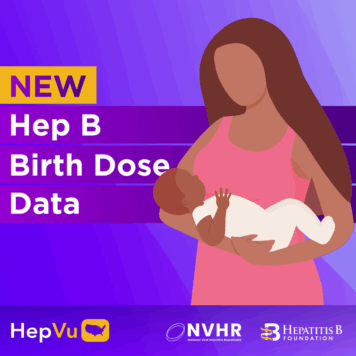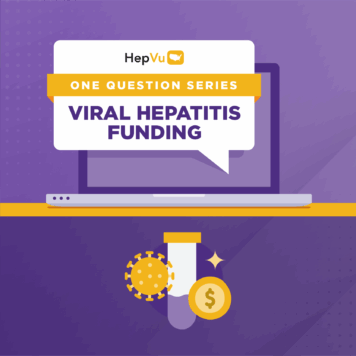Carolyn Wester, MD, MPH is the Director of the Division of Viral Hepatitis (DVH) in the National Center for HIV/AIDS, Viral Hepatitis, STD and TB Prevention at the Centers for Disease Control and Prevention (CDC).
Q: In September 2020, CDC released the Division of Viral Hepatitis (DVH) 2025 Strategic Plan. You noted in the plan’s Message from the Director that “the next five years are critical to viral hepatitis elimination.” Why is it so timely now?
We have ten years to achieve the goals we established to eliminate viral hepatitis as a public health threat in the U.S. by 2030.
We have seen high rates of Hepatitis C-related deaths in the U.S. begin to decline since 2014, following the introduction of direct-acting antiviral medications and updated Hepatitis C testing recommendations among baby boomers. However, significant disparities persist, particularly among American Indians, Alaska natives, and non-Hispanic Blacks. Although Hepatitis B-related death rates are lower, they have remained relatively flat and have disproportionately affected certain racial/ethnic groups, including Asians and Pacific Islanders and non-Hispanic Blacks.
Additionally, we’ve witnessed rapid increases in the new cases of Hepatitis C attributed to increases in injection drug use among reproductive age adults. Similarly, in 2018, the highest rates of acute Hepatitis B infections were among unvaccinated adults in their 30s, 40s and 50s, despite the availability of a preventative vaccine.
The increases in new infections and persistent disparities threaten promising trends towards elimination. We have the tools to achieve elimination but only through promotion and implementation of these tools with wise public health investment will we close the gaps in viral hepatitis over the next five years.
Q: The 2025 Strategic Plan lists four goals to prevent and control viral hepatitis in the U.S.:
- Reducing viral hepatitis infections
- Reducing viral hepatitis-related morbidity and mortality
- Reducing viral hepatitis-related disparities
- Establishing comprehensive national viral hepatitis surveillance
How will the establishment of these four goals influence the response to the viral hepatitis epidemic in the U.S.? From your perspective, what are the most critical steps toward achieving these goals?
Partnerships, within public health and across multiple sectors, are critical to achieving these goals, and we will need to leverage existing resources and prevention programs to ensure that core viral hepatitis services are available across all populations.
We clearly have the diagnostic and treatment tools to reduce viral hepatitis morbidity and mortality, yet nearly half of people living with Hepatitis C and two-thirds of people living with Hepatitis B are unaware of their infection. Even for those who are diagnosed, treatment is not universally available.
The most critical step to reducing morbidity and mortality includes integrating testing into all health care settings—not only in high-impact settings such as substance use disorder clinics and syringe service programs but also in primary care and within prenatal care for pregnant women. Ultimately, we need to develop a one-step point-of-care test that will diagnose current infections and monitor response to the treatment. Although about a million people in the U.S. have been treated for Hepatitis C with direct-acting antivirals, persisting inequities in access to testing and treatment require the decentralization, simplification, and integration of these services into primary care settings to broaden access to all groups.
In reducing new viral hepatitis infections, we need to scale up existing prevention tools to include Hepatitis A and B vaccination and syringe service programs placed in areas where people actively seek services, such as treatment clinics. And although a lofty goal, a Hepatitis C vaccine would be critical to preventing new infections.
Q: CDC emphasizes the importance of working with federal, state, and community partners to accomplish the four goals of the plan. Can you expand on how CDC will engage other stakeholders in the viral hepatitis space as well as new stakeholders serving hepatitis patients, especially those in at-risk populations such as people who use drugs (PWUD)?
In August of 2020, CDC announced a new program for FY 2021 titled “Integrated Viral Hepatitis Surveillance and Prevention Funding for Health Departments.” This program will support the development and maintenance of local health partnerships for viral hepatitis elimination, planning, and implementation, including partners who have specialized experience and capacity to reach people who inject drugs.
The new announcement includes three components. The first component is core surveillance, which includes outbreak detection and response. The second is core prevention, which includes elimination planning and increased access to testing, prevention, and treatment. Both components will be available to up to 58 jurisdictions.
The third component involves a special project to address infectious complications of high-risk drug use. We anticipate awarding that to up to ten jurisdictions, providing a comprehensive approach to preventing infections associated with injection drug use, including the development and implementation of an integrated service bundle of prevention, testing, and treatment for people who inject drugs.
Q: The plan focuses on serving at-risk populations disproportionately affected by viral hepatitis, especially those with many chronic diseases and conditions such as opioid abuse disorder. What are CDC’s strategies to reach these populations and provide quality screening, vaccination, and care?
One of the components of our new integrated funding opportunity will help implement service bundles in syringe service programs and substance use disorder treatment facilities.
Additionally, CDC’s national harm reduction technical assistance center has strengthened the capacity of syringe service programs by providing technical assistance to states and local jurisdictions developing or implementing syringe service programs.
Finally, should additional funding become available, our integrated prevention and surveillance funding announcement provides a mechanism for up to 58 jurisdictions to implement expanded viral hepatitis testing and prevention services in high-impact settings, including syringe service programs.
Q: Many key stakeholders have expressed concerns about an incomplete understanding of viral hepatitis prevalence across the country, attributable in part to a lack of hepatitis surveillance and data. The plan underscores the importance of surveillance in outbreak detection and response, characterizing disease burden, and monitoring progress. How does the CDC envision closing this surveillance gap over the next five years to meet the strategic plan’s goal?
Through CDC’s new five-year award, we intend to support about 58 state and local health departments, expanding enhanced viral hepatitis surveillance nationally. However, many jurisdictions are just beginning to establish viral hepatitis surveillance capacity and will require time to scale up activities. While it’s expected that this award will enable funded jurisdictions to develop and utilize viral hepatitis surveillance data to inform and monitor local elimination efforts, it is important to note that this is not the same as a national surveillance system. At this point, we will still need to rely on national surveys and other large data systems to estimate national viral hepatitis prevalence.
Q: Given the current state of funding for viral hepatitis surveillance and prevention, what steps will CDC take to improve surveillance capacity at the jurisdictional level? How might additional resources be deployed to further strengthen states’ ability to collect, analyze, and act-upon timely viral hepatitis surveillance data?
Along with the financial resources, CDC expects to release other tools in 2021. For example, updated surveillance guidelines, case reporting forums, and guidance on how to utilize surveillance data to develop jurisdictional cascades of care will be available to assist jurisdictions in improving their surveillance. CDC is also restructuring its internal processes to offer a more integrated approach in providing health department program support to best meet the needs of our jurisdictional recipients.
Q: Public health capacity at the state and local levels have been stressed due to the COVID-19 pandemic. How does CDC hope to achieve its goals in the plan and grow public awareness on the need to eliminate viral hepatitis as a public health threat amidst a global pandemic?
A strong public health infrastructure is essential to meeting the simultaneous challenges of continuing to perform core public health activities, such as preventing viral hepatitis, while at the same time controlling public health emergencies (like COVID-19). Synergizing public health systems to ensure that systems can detect, prevent, and control public health emergencies, like COVID-19, and routine, vital ongoing health needs and mitigate impacts on other areas of health may include strengthening the public health workforce; enhancing testing, linkage to care, and treatment efforts; reducing stigma, modernizing monitoring of hepatitis outbreaks and building capacity to rapidly respond to them; building laboratory services at the state and local level; and evaluating data to identify health disparities and building health equity. As part of our commitment to supporting the states through the crisis, we had to delay a reissuing of the funding announcement above to accommodate the limited bandwidth among health departments during the COVID-19 pandemic.
Q: The Department of Health and Human Services recently released a draft of the Viral Hepatitis National Strategic Plan: A Roadmap to Elimination 2021-2025. Are there elements of the national plan that you consider to be especially relevant to CDC’s plan?
The goals and targets in each plan for 2025 and 2030 are aligned. Both plans emphasize improving capacity for national surveillance, addressing stigma, serving disproportionately affected populations as well as increasing awareness, testing, linkage to care, and treatment. We consider each of these activities to be important in addressing the viral hepatitis epidemic in the U.S., including reducing disparities among at-risk groups to ultimately achieve viral hepatitis elimination.
Q: The goals outlined in the 2025 Strategic Plan are ambitious and require a multifaceted approach through research, clinical care, and public health awareness and education over the next five years and beyond. What message do you have for patients, advocates, physicians, researchers, and the public on the importance of working together to eliminate viral hepatitis in the U.S.?
Leveraging partnerships across sectors is essential to reach our goals among priority populations. For example, public health engagement with substance use disorder and corrections communities may help reduce disparities among people who inject drugs and justice-involved individuals.
Working together with our partners, federal agencies, and researchers could also lead to the development and increased availability of cheaper and easier to use diagnostic test—which could help improve screening rates. Taken together, these actions could reverse recent upward trends in viral hepatitis and bring us closer to achieving our goal of elimination.



